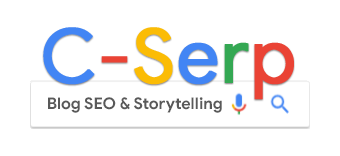7 PPC mistakes hiding in your ad accounts

Mistakes in PPC accounts are more common than most would like to admit.
Some are tactical, others strategic – nearly all hurt performance.
There’s no universal blueprint for success, but over time, patterns emerge.
After a decade working agency-side across ecommerce, B2B, and niche retailers, I’ve seen those patterns up close:
- What works.
- What doesn’t.
- Where accounts consistently go wrong.
Every account is different. True understanding takes time – after weeks (or months) of being in the weeds. But some issues come up again and again.
PPC isn’t an exact science, but there are guardrails.
These are the seven most common mistakes I find hiding in ad accounts and how to fix them.
1. Oversegmenting campaign structure
These types of lists can be tricky since PPC changes frequently.
What’s considered a mistake this year might be best practice the next.
Over the past five years, campaign structure has definitely fallen into that category.
We’ve eliminated the need to segment every keyword into its own ad group or split every match type into separate campaigns.
With the evolution of broad match, improved Smart Bidding algorithms, and the responsive search ad (RSA) format, the value of conversion consolidation now outweighs granular control.
- What used to require 50 campaigns can now be done with 5.
- What was once 20 ad groups can now be 3.
In Shopping and Performance Max, SMEC carried out an excellent study analyzing the correlation between campaign success (relative to a Target ROAS objective) and conversion data.
It’s an insightful read – but spoiler alert: conversion volume at the campaign level is the foundation of success.
While the study focused on PMax and Shopping, the same principle applies to Search campaigns using Target ROAS or Target CPA strategies.
Whether it’s inertia or fear of breaking something that doesn’t seem broken, oversegmenting campaigns and ad groups remains the most common structural issue I see – especially in Search.
With AI search on the horizon, combining conversion data is about to become more vital than ever, and control will continue to loosen.
And that brings us to the next mistake – one that’s been around much longer.
2. Neglecting A/B testing
Testing has always been key to success.
Yet I rarely see PPC marketers using Experiments in Google Ads – one of the best tools for uncovering incremental gains.
Without testing, it’s impossible to know what’s truly working.
- How do we know if a certain landing page is the best choice?
- How do we know if a certain bid strategy works better than another?
- Does PMax or Shopping work better to achieve my Target ROAS?
- Do my pinned RSAs perform better than trusting Google to choose?
- Do my PMax campaigns work better using asset groups with a feed-only setup or using assets?
Too many people rely on what others say is best practice (yes, I see the irony) and implement changes without testing.
Just because PMax outperforms Shopping in other campaigns doesn’t mean it will here – especially if your PMax campaign is Shopping-heavy. Test and find out.
And even once a test is complete, that shouldn’t be the end of it.
PPC changes quickly, so test again in a year or sooner.
New products evolve and improve. Just look at PMax compared to three years ago.
Google has expanded its experiment capabilities, so there’s plenty to explore.
Focus on key areas:
- Landing pages.
- Ad copy.
- Ad formats.
- Campaign consolidation.
- Creative.
Build a plan to test your evergreen campaigns throughout the year.
Outside of peak periods, you should always have at least one A/B test running.
Dig deeper: How to develop PPC testing strategies
3. Using only one asset group in PMax campaigns
When it comes to feed-based campaigns, people often associate PMax primarily with Shopping ads.
What they often overlook is the impact other channels – especially Search – can have within PMax.
You could be missing out on highly relevant traffic that would help scale your campaigns.
Yet so many PMax setups still use just one asset group with generic copy and creative that tries to cover everything (e.g., best sellers).
Too often, I see a single asset group targeting hundreds – sometimes thousands – of products, with no segmentation tailored to specific brands or categories.
That’s a missed opportunity, particularly for improving Search performance within PMax.
You wouldn’t create one Search campaign and target that many products in a single ad group, so why do it in PMax?
Create multiple asset groups that tailor landing pages, ad copy, audience signals, search themes, videos, and image creative.
It’s the best way to get the most out of your PMax campaigns.
With Google’s new channel reporting – or by using Mike Rhodes’s excellent script – you can prioritize asset group segmentation based on the percentage of Search traffic in each campaign.
That way, you’ll know exactly where to start.
4. Overlooking ad assets
Ad assets are essential for maximizing your ad space and extending your messaging beyond the RSA.
When used properly, they can improve CTR by 10-15%, drive more clicks, and even boost quality score.
They also give you more control over how your ads appear.
This is becoming even more important as Google experiments with features like sitelinks appearing in RSA headlines.
Despite this, many accounts still either don’t use ad assets or rely entirely on automated ones.
It’s not just the lack of assets that’s the problem, but the lack of quality.
The number of automated assets I see is worrying.
It suggests that ad assets have been deprioritized to the point where advertisers are letting Google handle everything.
That might be convenient, but it’s far from effective and could result in irrelevant or sloppy ad formats.
Don’t rely on automated assets. Take control and build your own.
- Add descriptions to sitelinks to maximize space.
- Use multiple callouts and structured snippets to give Google or Bing options to test.
- Use price assets to highlight key product pricing and promo assets to showcase offers.
And don’t forget about PMax. I still see campaign-level assets in only about 20-25% of PMax campaigns.
Keep in mind that PMax generates Search ads.
At best, it’ll pull from account-level assets – some of which may be irrelevant.
At worst, it’ll have nothing to work with.
Dig deeper: Top 4 PPC mistakes and how to fix them
5. Ignoring first-party data
As automation and AI-driven targeting become more prevalent, Google is increasingly relying on quality customer data as the foundation for performance.
I’ll admit, I was skeptical at first. It felt like just another way for Google to collect more data.
And while there’s still some truth to that, the landscape has shifted.
With targeting moving away from keywords (hello, AI Max) and more advertisers incorporating first-party data, it’s no longer a competitive advantage – it’s a baseline requirement.
You’re not adding first-party data to get ahead anymore, you’re adding it just to keep up.
The good news is, integration has become far easier.
Conversion data opt-ins and import options have streamlined the process, so there’s really no excuse not to use them.
For smaller businesses, data quantity might be a hurdle, but get what you do have into the system first.
Over time, you can expand your volume and list segmentation. Your Smart Bidding performance depends on it.
6. Mismanaging conversion tracking
A common audit issue is missing or misaligned conversion goals that don’t reflect the account’s true objectives.
Tracking has always been critical – but now, the stakes are even higher.
You can have the perfect campaign structure, compelling ads, strong targeting, and a great product or service.
However, without meaningful tracking in place, your campaigns will never reach their full potential.
The nature of the problem often depends on account size.
In smaller accounts, there’s frequently little to no conversion tracking.
Dev support is minimal, so getting code on the site can be a challenge – especially for ecommerce tracking.
In these cases, GA4 imports for purchases or leads (e.g., “Thank you” pages) are usually the go-to solution.
In larger accounts with better dev support, I often see GA4 imports used when dedicated Google Ads tracking would be far more effective.
To enrich the data, look into:
- Enhanced conversions.
- Consent mode.
- Cross-device tracking.
- View-through conversions.
With more budget at stake, there’s no excuse not to track everything that matters.
Dig deeper: Top 10 Google Ads mistakes to avoid in 2025
7. Making too many changes at once
The first six issues are often flagged in audits before a new agency, freelancer, or in-house exec takes over.
The mistake I see too often is diving in too fast – making sweeping changes in an effort to turn things around quickly or leave a mark early.
I get the urgency. But even with best practices in hand, PPC isn’t an exact science.
Every account has its nuances, and it takes time to fully understand them.
Start with the highest-priority changes, and roll them out gradually – not just for the issues mentioned above, but for any audit recommendations.
- How can you know if a new bidding strategy worked if you added new conversion actions at the same time?
- Or if first-party data made a difference when you also created new asset groups?
A/B testing helps isolate variables, but not everything can be tested in that way.
What works in one campaign may not work in another.
That’s why it’s critical to prioritize changes, monitor results closely, and avoid overlapping adjustments.
Too many changes at once – especially at the campaign level – can disrupt performance and confuse the algorithm.
Even if results improve, you’re left without a clear sense of what actually made the difference.
And that makes it harder to apply learnings elsewhere.
Don’t be that account
Every account will have quirks, legacy decisions, or ideas that didn’t pan out. That’s normal.
But these mistakes aren’t quirks – they’re avoidable. And too often, they’re what separate good accounts from great ones.
Avoid the common pitfalls. Test what you change. Track what matters. And take control where it counts, especially when automation is doing more of the rest.
Because when things aren’t working, it’s rarely just one issue. But it usually starts with one.
Dig deeper: Stop sabotaging your PPC success: 13 traps that kill growth


